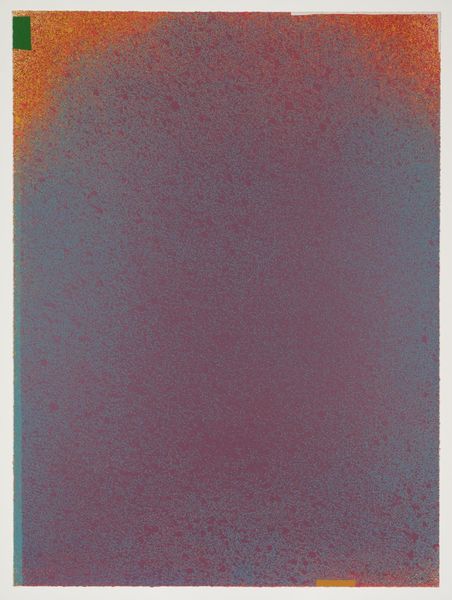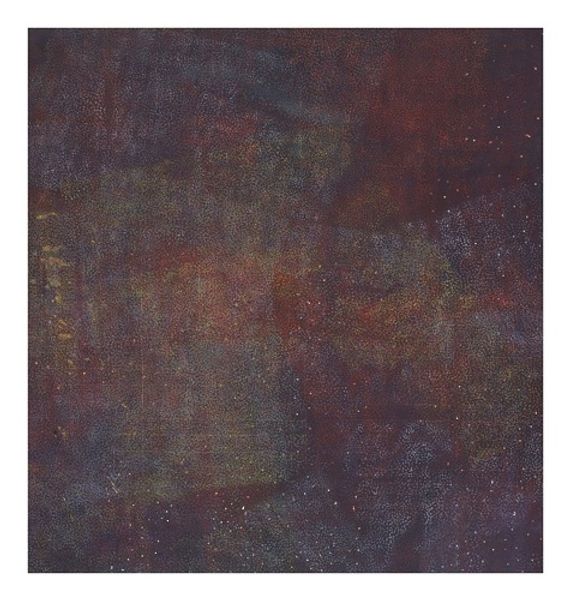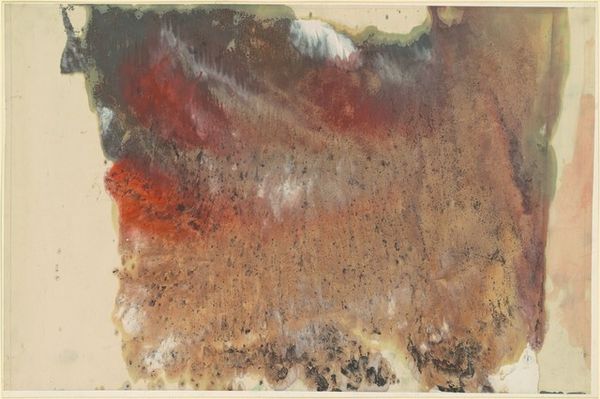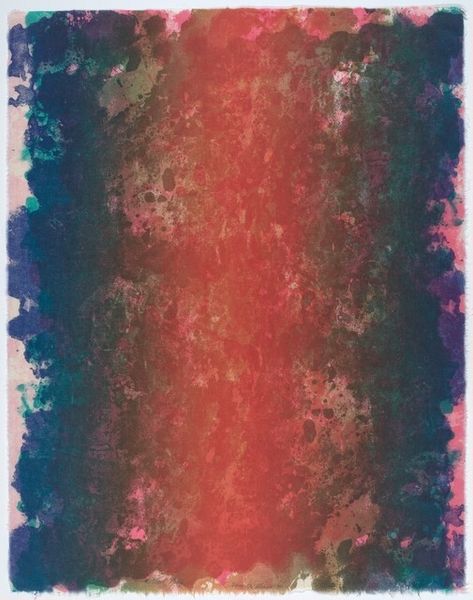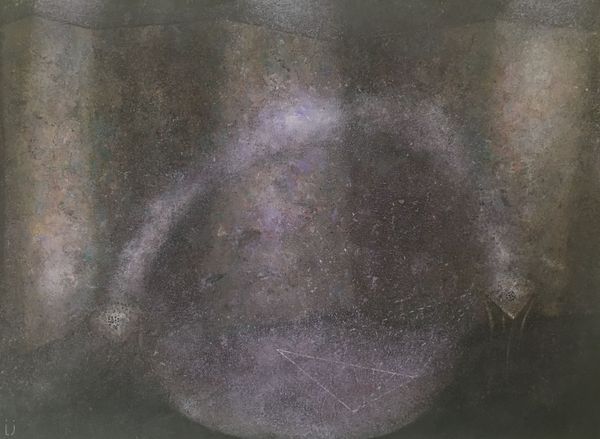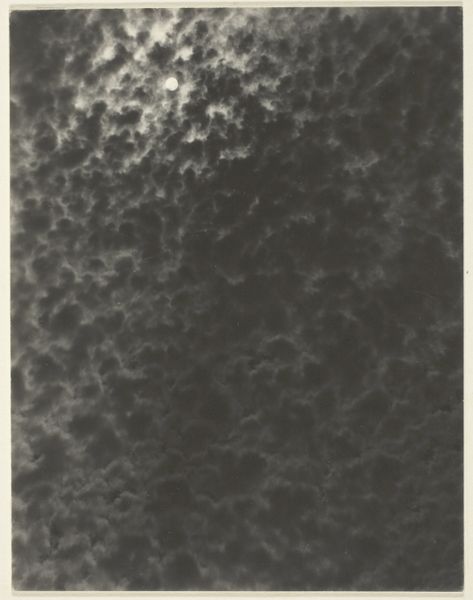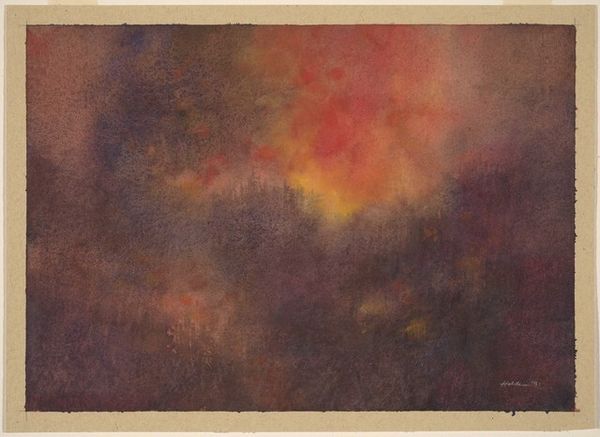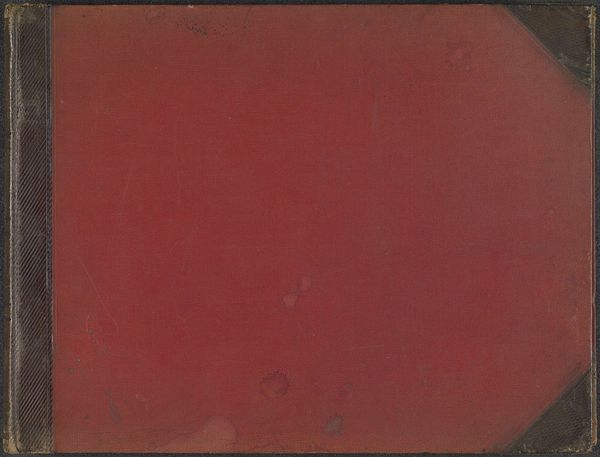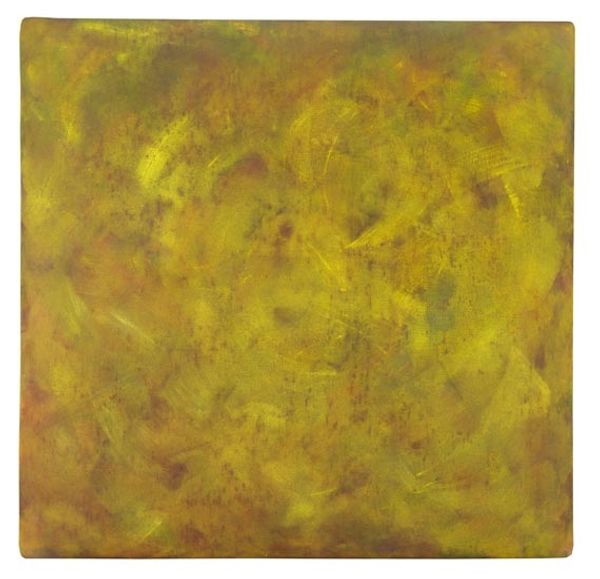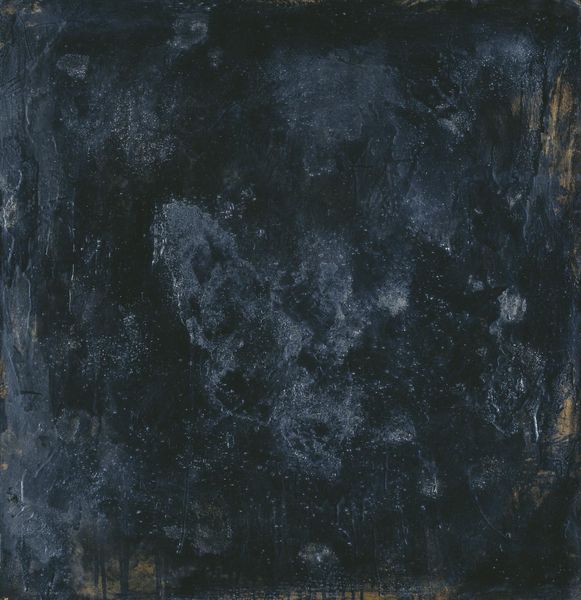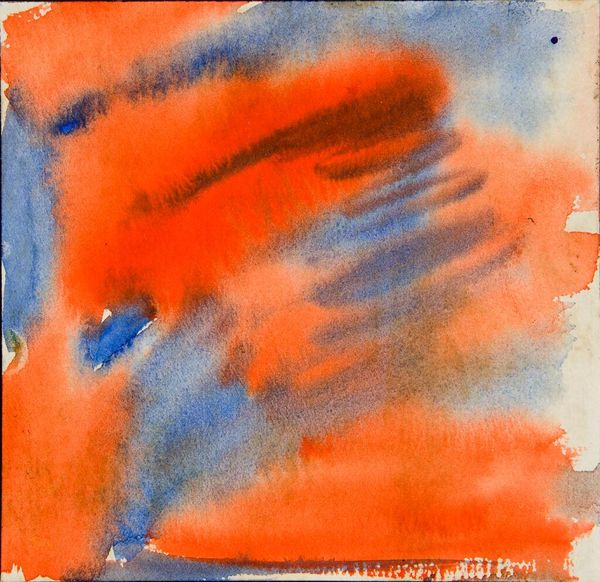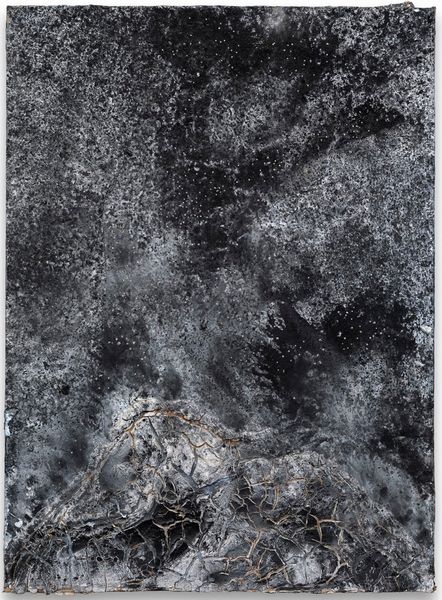
Copyright: Joe Goode,Fair Use
Editor: We're looking at Joe Goode's "Pollution-R3" from 1995, a mixed-media work. The colours are very earthy - browns and oranges - and it has a somewhat distressed texture. It's evocative, but also a bit unsettling. How do you interpret this work? Curator: Goode's "Pollution-R3," beyond its surface abstraction, speaks volumes about environmental anxieties present in the late 20th century. Consider the title itself: "Pollution." Doesn't that frame the murky, almost decaying tones within a sociopolitical context? This wasn't just about aesthetic exploration, but a commentary. Editor: A commentary on what, exactly? The impact of industry? Curator: Precisely. Goode created this piece during a period of heightened environmental awareness. Abstract Expressionism provided a language to articulate concerns about industrial expansion and its impact on the natural world. Do you notice how the "organic texture," as the tags mention, appears almost suffocated by the darker shades? It's a visual metaphor. Editor: That makes sense. I initially saw just the texture and color, but now I'm thinking about the layered impact of human actions on the environment. Is the "R3" significant? Curator: The “R3” likely signifies a specific series or investigation within Goode's larger body of work. But think about the ‘R’ – it could also allude to "reduce, reuse, recycle,” the mantra that was gaining traction. It invites us to think about our responsibility, not just lament the problem. Editor: So, it’s less about a singular interpretation and more about the dialogue it creates around these issues? Curator: Absolutely. Goode’s work compels us to confront the uncomfortable realities of pollution and its far-reaching effects, pushing viewers to become active participants in the discourse. What a great intersection between art, activism and our planet. Editor: I see that now. I initially focused on the surface, but now understand the depth of its message and the period's call to action. Curator: It's about looking beyond aesthetics and recognizing art's power as a tool for social change and commentary.
Comments
No comments
Be the first to comment and join the conversation on the ultimate creative platform.
